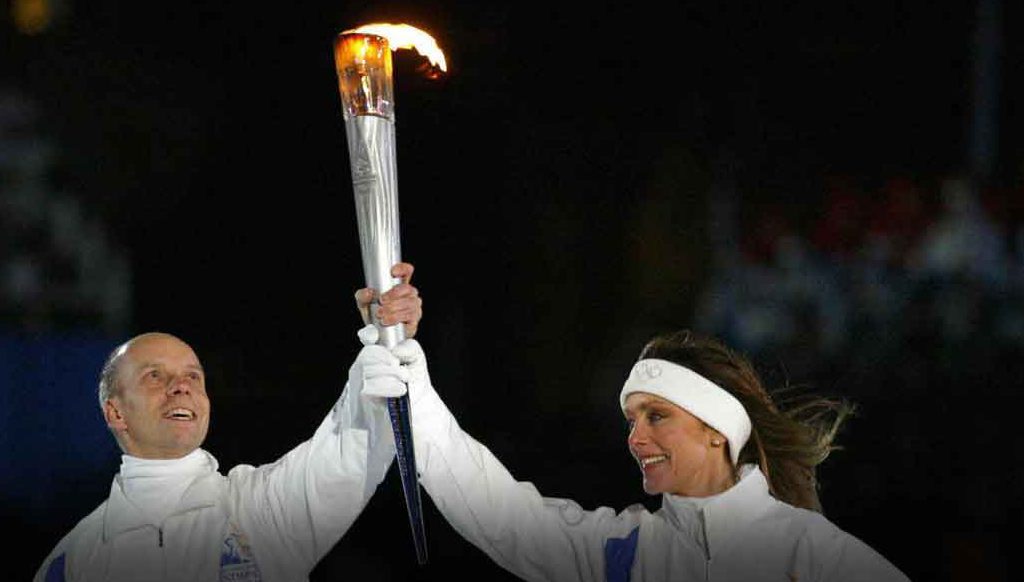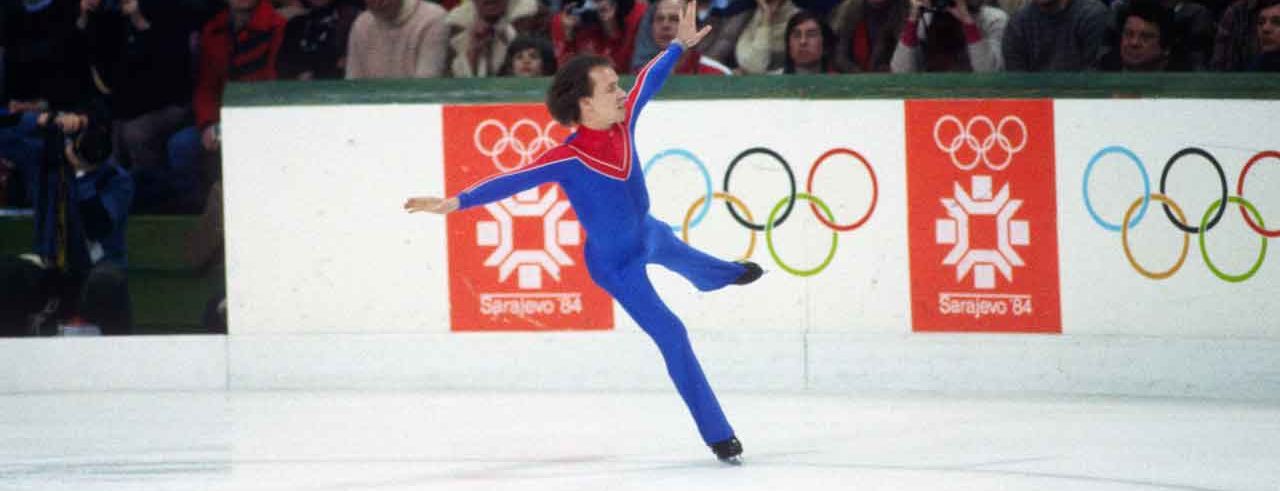Scott Hamilton’s Life After the Olympics

From Ice Capades to Stars on Ice, Scott Hamilton’s post-Olympic career is reborn.
Once you’ve reached the pinnacle of success in your field, where do you go from there? It was a question Scott Hamilton had to ask himself in 1984. He’d won Olympic gold and four consecutive world figure skating championships. Now what?

Career options for a champion figure skater were surprisingly slim. When four-time world champion Hayes Jenkins hung up his skates in the early 1960s, he took a job as an attorney for the Goodyear Tire Company. Former Olympic gold medalist Dick Button attended Harvard Law School and became a TV analyst. Olympic gold medalist David Jenkins went on to medical school and a career as a physician. Where would Hamilton go next?
“I’m this four-time world champion and I step into the world and they’re like, ‘We have no idea what to do with you,’” he says.
Ice Capades
Winning national and international skating championships was good for Hamilton’s reputation, but these honors did little to sustain his bank account. “I couldn’t make any money skating or anything to do with skating. So I had to turn pro because I was broke,” he says.
In the mid-1980s, one of the few options available to a professional skater was to join a traveling show. At the time, the biggest show around was Ice Capades.
Ice Capades was the brainchild of Pittsburgh, Pa., rink owner, John H. Harris, who started the ice spectacle in 1940 with a smorgasbord of figure skaters, clowns, jugglers, comedians, and chorus girls. By the mid-1980s, the show encompassed everything from Olympic figure skaters to costumed characters from popular TV shows and movies.
When Hamilton was added to the cast in 1984, he joined a lineup that included fellow Olympic medalist Dorothy Hamill, daredevil Steve Nelson (who leapt over a station wagon), the Smurfs, an E.T. skit featuring floating bicycles, and a Rockette-style chorus line. Ice Capades president Richard H. Palmer welcomed Hamilton to the company by telling him, “It’s a really good thing you won the Olympic gold medal, because you’re too short to join the chorus line.”
As part of the Ice Capades cast, Hamilton worked hard and studied even harder. “I really tried to pay attention. I wanted to learn, I wanted to understand why they produce a show like this, and why the lighting is, and how many crew people you need,” he says. “I didn’t know it at the time, but I was learning how to produce a show.” It was a skill that would soon prove useful.
YOU MIGHT ALSO LIKE: Our section about common people doing uncommon acts, #IGiveBeyond
Stars on Ice
In 1986, Metromedia, the parent company of Ice Capades, sold the popular show to International Broadcasting Corp. The move meant more than a change in ownership. It marked a new emphasis on female skaters. “They decided that the new owner didn’t want men at all. Sexual discrimination in the workplace is horrible,” Hamilton jokes. His Ice Capades contract wasn’t renewed, and Hamilton once again became a free agent.
In 1986, just as Hamilton’s contract was ending, his manager, Robert D. Kain of the sports marketing firm IMG, stepped in. Kain proposed a new tour, with Hamilton as its centerpiece. Unlike Ice Capades, the new show — Stars on Ice — would be heavy on skating star power and athleticism, and light on fluff. Over the years, it would feature legends like Brian Orser, Kurt Browning, Kristi Yamaguchi, and Katarina Witt. “It wasn’t just show skating, where you show up and wiggle your rear end and do one jump. No, you go out and you do your best stuff. And that way the audience felt appreciated,” Hamilton says.
Stars on Ice was undeniably a vehicle for Hamilton, but he checked his ego each night before getting out onto the ice. “There wasn’t anything I wouldn’t do to make it happen. I wasn’t proud or anything else. I didn’t wear my medal under my shirt every day. I had it stuffed in a brown paper bag in my ‘sock drawer,’” he says.
Stars on Ice started small, performing just five shows in its first year. The production had a homespun feel that Hamilton described as “Spanky and Our Gang.” This smaller scale gave him the kind of artistic freedom he’d never experienced in the corporate, money-driven world of Ice Capades.
Hamilton gradually cultivated a loyal following for Stars on Ice by watching, paying attention, and learning his audience’s likes and dislikes. “It worked, because we were filling up buildings constantly. And it became a cool thing,” he says.
The show expanded to 30 cities. When Ice Capades folded in the mid-1990s, Stars on Ice continued to gain momentum. In 2008, the tour celebrated its 1,000th performance.
For Hamilton, one of the biggest wins with Stars on Ice has been its wide appeal. The show’s audience is heavy in men — a demographic that’s often indifferent to figure skating. “In trying to be broader in my appeal and not just going out and doing what’s normal or what’s expected, I try to create a different kind of environment,” he says. “I was able to break down a lot of those barriers that existed, and just create something really accessible and fun.”
Stars on Ice evolved into much more than a touring skating show. It became a vehicle for building relationships with an audience that returned faithfully, year after year. “We weren’t just an entertainment entity or an ice skating show,” Hamilton says. “We became members of their family.”
The strength of that family relationship would be tested in 1997, when Hamilton was diagnosed with testicular cancer.
WANT TO FOLLOW SCOTT'S JOURNEY? Continue with Scott Hamilton's Miracle
Updated:
June 26, 2017
Reviewed By:
Christopher Nystuen, MD, MBA